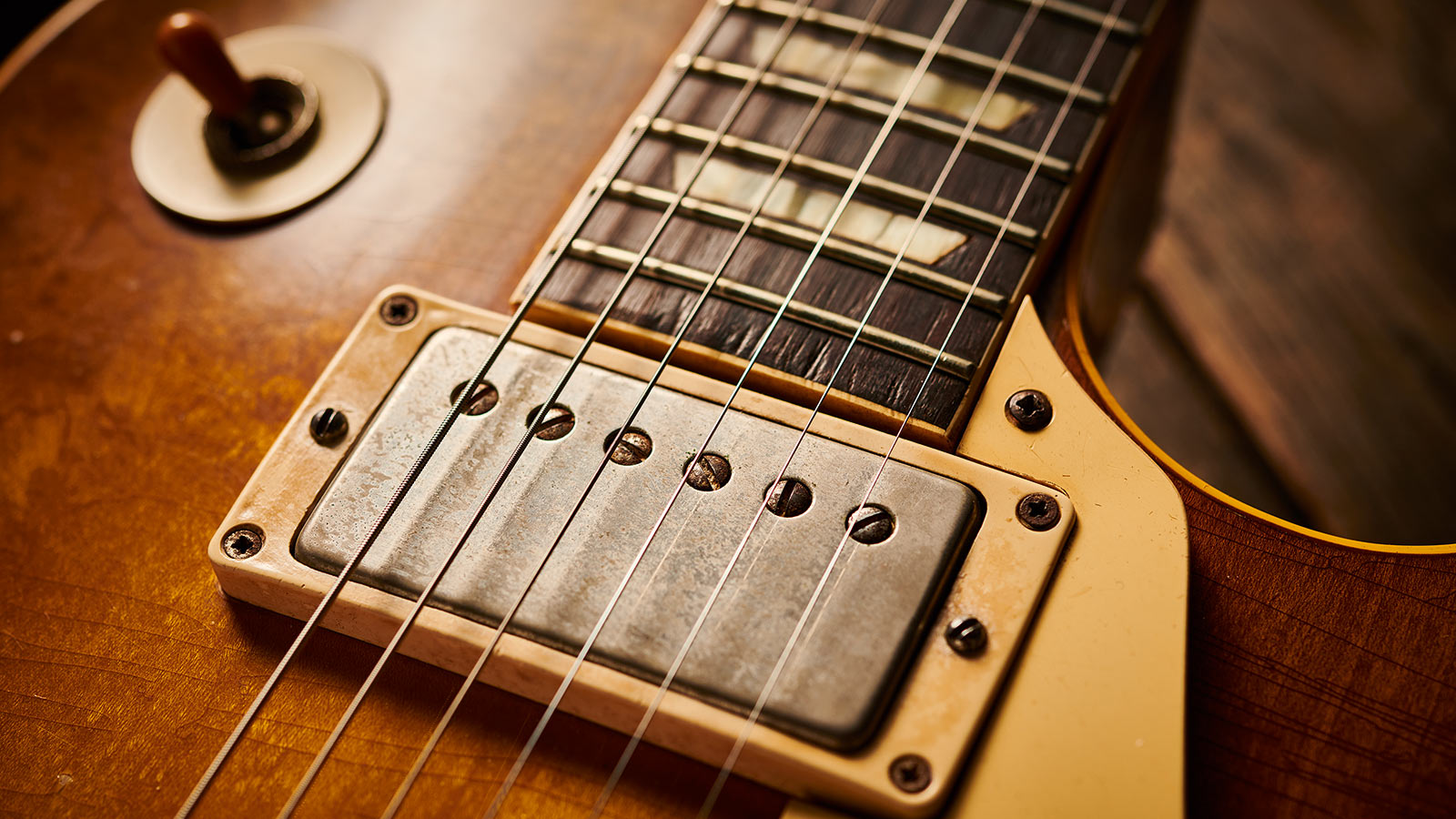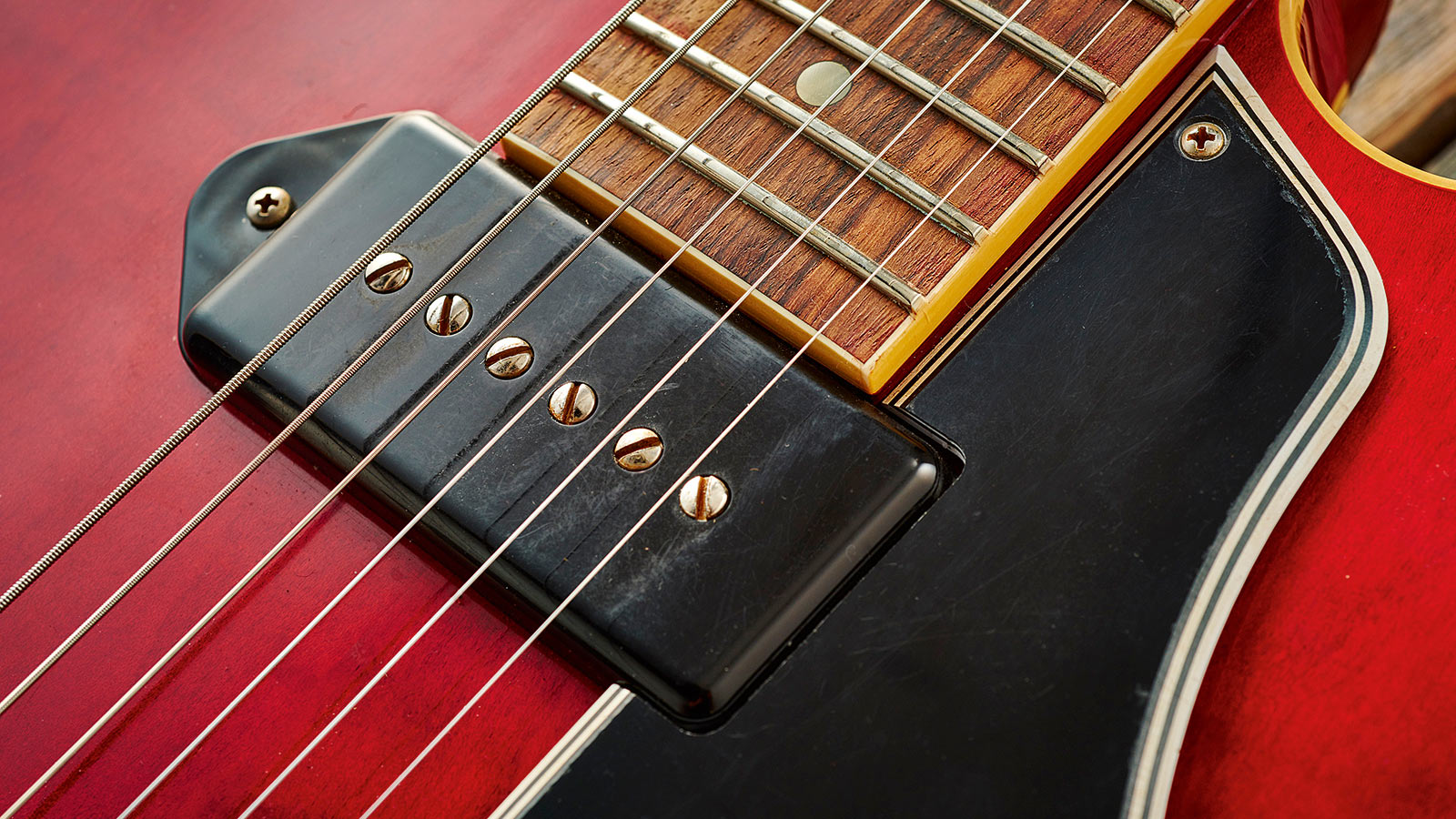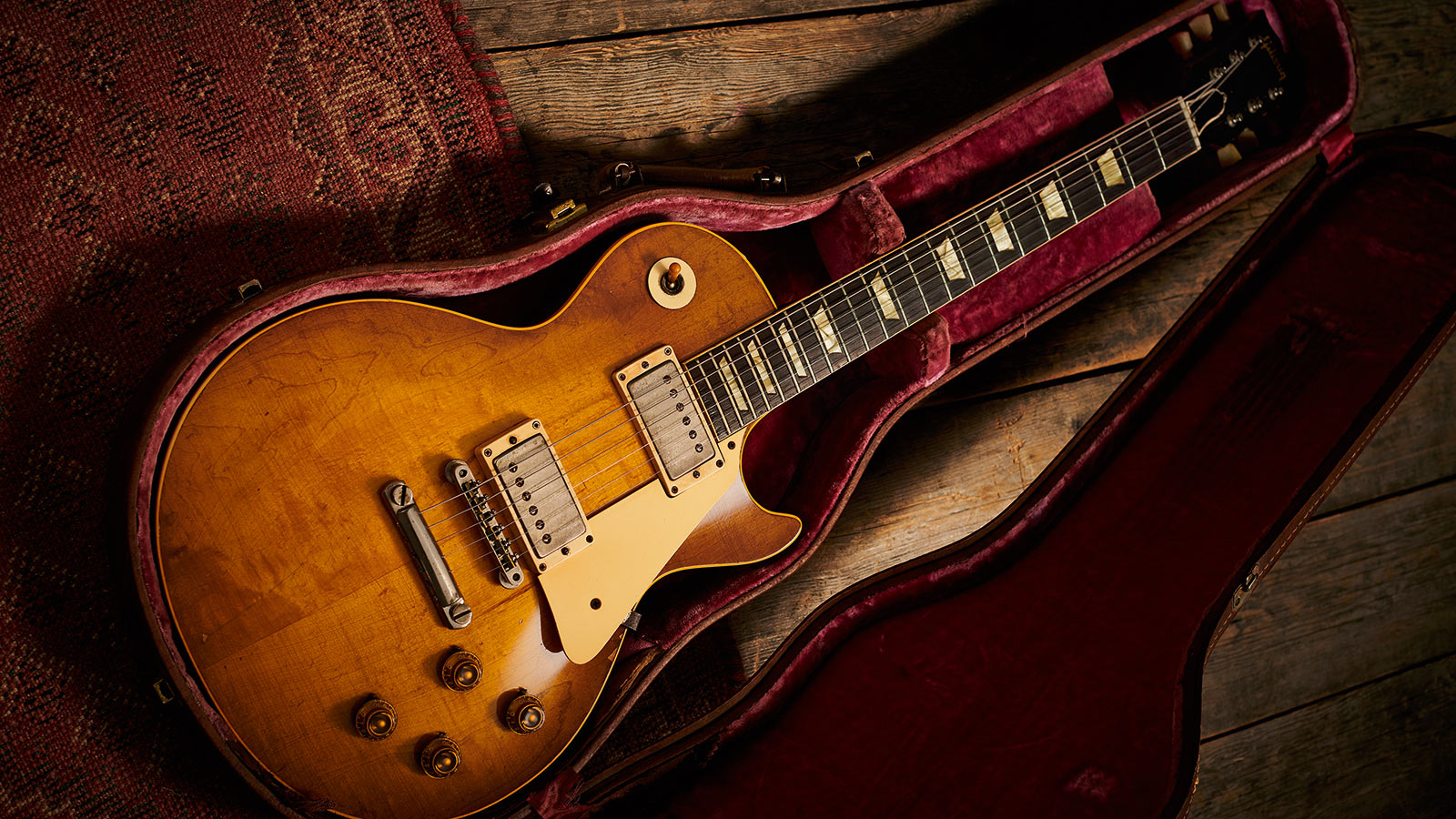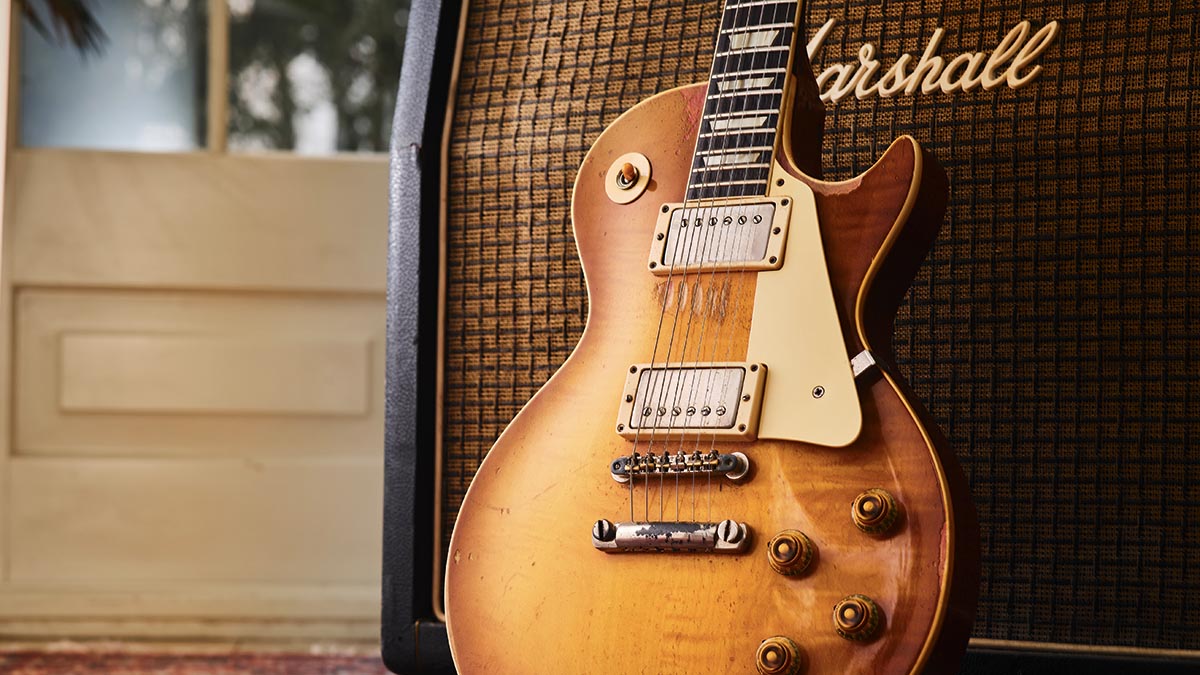
Nobody disputes the ‘Holy Grail’ status of PAFs, but their relative scarcity means very few of us will ever get the chance to try the real thing. The danger with ‘Holy Grails’ is the way we project our hopes and dreams onto them. This partly explains why those lucky few who do experience vintage PAFs don’t always get what they expected.
Classic recordings are of limited value because any guitar tone that has been processed through random microphones, preamps, equalizers and so forth can only tell us so much. Let’s begin by describing what vintage PAF pickups actually sound like so you can judge whether the PAF replicas in your guitar are as accurate as the manufacturer claims.
Bloom & Bust
Apparently, some vintage PAFs sound terrible, but the ones for sale on Reverb always sound “amazing”. Jokes aside, any informed discussion of PAF tone has to acknowledge a range of characteristics.
However, certain traits are shared by most PAFs and when you’re trying to authenticate them, knowing what to listen for can be more informative than knowing what to look for. Some copies are visually indistinguishable from genuine PAFs, but replicating the tone still eludes the overwhelming majority.

Vintage PAFs and P-90s sound similar, but this shouldn’t be surprising. Gibson had settled on the P-90 as the best tone generator for its electric guitars, and it’s logical to assume that Seth Lover was trying to create something close to a noise-free P-90 rather than reinvent the wheel.
Nevertheless, PAFs do have an added dimension. To our ears, P-90s sound drier and more direct than PAFs. In contrast, PAFs exhibit a more harmonically rich and multi-layered character. In acoustic guitar terms, P-90s equate to Indian rosewood whereas PAFs are more like Brazilian.
PAF enthusiasts use the term ‘note bloom’ and it describes the phenomenon of sustaining notes changing in character
With PAFs, we test for microphony by tapping the cover or the top of a bobbin with a guitar pick, or even the body with our knuckles. You should hear the tapping very clearly through an amp, but if you can only hear a dull thud or nothing at all, be suspicious.
Get The Pick Newsletter
All the latest guitar news, interviews, lessons, reviews, deals and more, direct to your inbox!
Genuine PAF pickups are among the clearest and brightest of all humbuckers – so much so, they’ll handle indie jangle, jazz, funk and country. But that clarity shouldn’t mean underpowered mids or excessive treble.

With electric guitars, most of the ‘action’ happens in the midrange, and PAFs tend to combine full mids with excellent detail resolution and crisp pick attack. They’re also extremely responsive to playing dynamics – and another tell-tale characteristic emerges when you hold a note while adding finger vibrato.
As the note fades, the sound that’s generated by string friction against the frets and fingerboard gradually takes over and can be almost as loud as the note itself. It’s a breathy and evocative effect you have probably heard on many great recordings, and only vintage PAFs and the very best copies can do it really well
You should also be able to back off the volume controls with no loss of clarity or treble. Bridge PAFs often sound a bit too bright and balance best with the neck if you set the tone control to about half way.
PAF enthusiasts use the term ‘note bloom’ and it describes the phenomenon of sustaining notes changing in character – maybe a higher harmonic drifting in or even a shifting series of harmonic overtones that resembles a very subtle and natural flanging effect. It’s an ethereal and beautiful thing to experience, and this ability to ‘shape shift’ is one of the most intriguing of the PAF’s attributes.
PAF-ing Your Pickups
A vintage set of pickups would be a ‘magic bullet’ solution for PAF tone, but the prices are now astronomic. For this reason, most players turn to PAF replicas instead – and while the choice is vast, the endless merry-go-round of pickup swaps can be frustrating and costly, especially if you don’t consider all the variables.
Fortunately, the only tools that are needed to find the sweet spot are a screwdriver and your ears
Potentiometers in 1950s Gibsons usually read above 500kohms, so try to determine the pot values in your guitar. Gibson went through a period of fitting 300k pots, and if your guitar has those, any set of humbuckers will sound dark and muffled. Also check that the tone controls are connected to the centre tags of the volume pots, 1950s style.
If you don’t take the time to adjust your pickups, you may not realize how good they can sound. In studios, microphone placement goes hand in hand with microphone selection, and pickups are no different.
PAFs and the best clones are extremely sensitive to height setting relative to the strings. There are plenty of online tutorials out there and some recommend specific measurements, but all pickups are different.
Fortunately, the only tools that are needed to find the sweet spot are a screwdriver and your ears. Having said that, there are other features and modifications you should consider in your PAF tone quest...

PAFs Uncovered
PAF-style pickups are relatively easy to modify, but having to remove the cover may be a complicating factor here. Solder blobs fix the cover to the baseplate, so a very hot soldering iron with a solder sucker should remove them. A blade can cut through any solder residue while it’s still runny and the covers will usually pull off. Wax potted pickups may require a blast with a hot hair dryer before they’ll come loose, but if they’re potted then it’s usually a lost cause anyway.
Players began removing covers to increase output and push valve amps into overdrive. It’s debatable whether cover removal increases output or merely achieves an illusion of loudness by emphasizing the upper midrange. You may hear a bit more ‘bloom’ and aggression, but some vocal articulation can be lost. It’s a trade-off, though if you like bright and aggressive tone, you’ll probably prefer things uncovered.
Covers that are too thick may reduce clarity, harmonic chime and definition. Vintage PAF covers weigh around 24g and are pressed from very thin nickel. So if your covers are thick and heavy, they might be worth swapping. The best-sounding covers aren’t always those expensive types with classic contours, artful dimples and eye-candy relicing.

Magnet Swaps
Swapping the magnet can dramatically change the tone of a humbucker. Alnico II, III, IV and V magnets are all vintage correct and they should be 2 1⁄2 inches long. They do sound different, and since they are relatively cheap and easy to buy, it’s best to try them out for yourself.
You’ll find plenty of online opinions; we all hear things differently and it’s important to assess how those magnets interact with your guitar’s hardware and your amp.
If you’re changing both magnets in a set of pickups, you should ensure they remain in phase; you can use a compass to determine which edge is south
Stronger magnets can be louder and more aggressive, but to avoid string-pull and harshness you may be obliged to set them lower than a PAF with a weaker magnet, which just levels things out. Listen for the frequency balance and, crucially, the midrange voicing. For an early 1960s PAF tone, Alnico V may be the best magnet choice. And if you’re after stronger mids and softened treble, then we’d advise you to consider the shorter 2 5/16-inch magnet that was phased in post-1961.
To swap magnets, undo the four bobbin screws under the baseplate a few millimeters to loosen the bobbins. If the pole screws are screwed into the baseplate, you’ll need to retract those, too. Then carefully grip the exposed end of the magnet with some thin pliers and slide it out.
If you’re changing both magnets in a set of pickups, you should ensure they remain in phase; you can use a compass to determine which edge is south, usually oriented on the screw side. If you like the Peter Green ‘out-of-phase’ tone, flip the neck magnet so it’s north to the screws.
Screw it
The earliest PAFs had steel bobbin screws and, although brass soon became standard, some later PAFs do show up with steel screws. Noted examples include the Peter Green ’Burst and the Kris Blakely-owned Kossoff ’Burst.
When Duane Allman swapped his ’57 Goldtop for a ’59 ’Burst, he insisted on keeping his original pickups with their steel screws. As they’re magnetic, the steel screws become polepieces and they give PAFs extra bite. It’s a subtle but clearly audible difference and by far the cheapest mod you can make to your humbuckers. Simply unscrew the brass and screw in the steel.
As steel is graded for carbon content, this means the pole screws can affect the tone. Jon Gundry of Throbak Pickups reports vintage pole screws varying from 1006 to 1018. For a sweet and smooth tone, try some 1010 screws, or for upper midrange cut, try 1018 or 1020. Sunbear Pickups is a good source for pole and bobbin screws [in the UK].
Consider The Coils
Differences in coil resistance readings in a PAF-style humbucker can have a profound effect on tone. A pair of closely matched coils will have a thicker tone but may lack clarity. A greater difference between the coils can enhance brightness and dynamic response, but the tone becomes excessively thin if they’re too far apart.
Finding the right degree of offset between the coils gives the best of both worlds. The wires linking the coils are usually tucked between the bobbins. If you can pull them out and remove the insulation, it’s possible to measure the resistance of each coil.
Differences in coil resistance readings in a PAF-style humbucker can have a profound effect on tone
A pair of pickups gives you four coils to choose from and recombining them can modify the offset. Clearly, this is the most advanced mod detailed here and is not without risk. It’s easy enough if you’re careful, but a professional could do it for you and it will be cheaper than buying a new set of pickups.
Hopefully our two PAF features have gone some way to demystifying vintage Gibson PAF pickups, and you should now know exactly what to look for when buying modern PAFs. Yes, vintage PAFs are the dream, but with the right combination of ingredients and sympathetically wound unpotted coils, some replicas sound a lot closer than you might think.
- For more from our restoration expert, head over to Huw Price.
Huw started out in recording studios, working as a sound engineer and producer for David Bowie, Primal Scream, Ian Dury, Fad Gadget, My Bloody Valentine, Cardinal Black and many others. His book, Recording Guitar & Bass, was published in 2002 and a freelance career in journalism soon followed. He has written reviews, interviews, workshop and technical articles for Guitarist, Guitar Magazine, Guitar Player, Acoustic Magazine, Guitar Buyer and Music Tech. He has also contributed to several books, including The Tube Amp Book by Aspen Pittman. Huw builds and maintains guitars and amplifiers for clients, and specializes in vintage restoration. He provides consultancy services for equipment manufacturers and can, occasionally, be lured back into the studio.
“Classic aesthetics with cutting-edge technology”: Are Seymour Duncan's new Jazzmaster Silencers the ultimate Jazzmaster pickups?
“We’re all looking for new inspiration. Some of us have been playing humbuckers for a long, long time”: Are we witnessing a P-90 renaissance? Warren Haynes has his say


![A black-and-white action shot of Sergeant Thunderhoof perform live: [from left] Mark Sayer, Dan Flitcroft, Jim Camp and Josh Gallop](https://cdn.mos.cms.futurecdn.net/am3UhJbsxAE239XRRZ8zC8.jpg)








